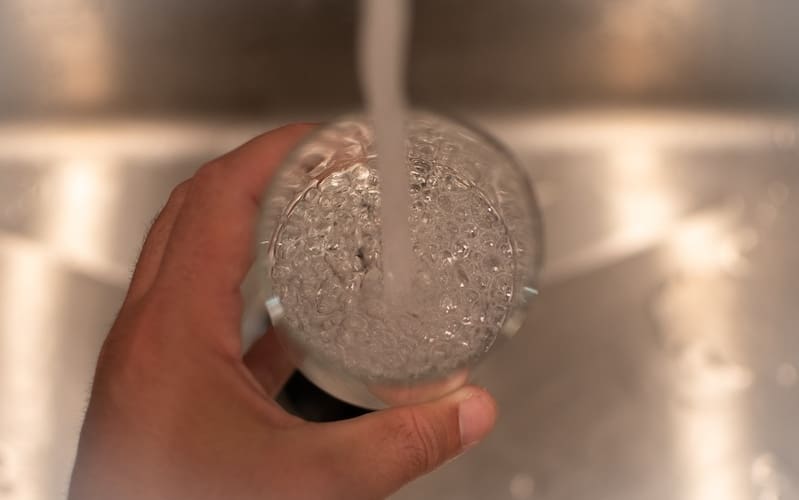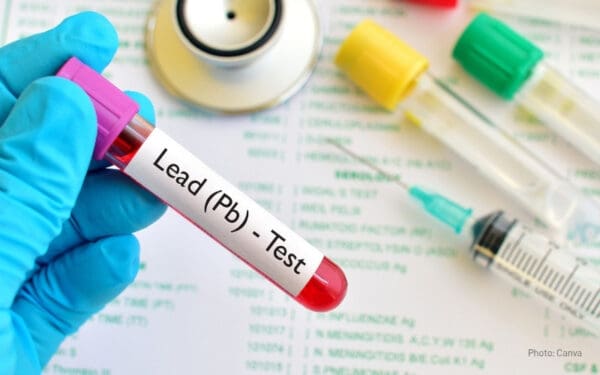
Nearly 15,000 harmful PFAS chemicals pervade our environment. They are in clothing, home furnishings, detergents and our drinking water. Photo: Shutterstock
What’s your typical morning routine? For many of us, it might involve a shower, brushing and flossing teeth, applying contact lenses if we need them, maybe scrambling eggs for breakfast.
The last thing on our minds is per- and poly-fluoroalkyl substances (PFAS), also known as “forever chemicals” because they don’t break down easily in the environment. But they’re right there in every move we make. These harmful chemicals that build up over time are typically derived from fossil fuels and are hidden away in our shampoo and shower gel, toothpaste and floss, contact lenses, and the nonstick pans we use to scramble those eggs. We didn’t mention toilet paper, but they can be there, too.
In fact, our homes are rife with PFAS. Originally invented to make our lives easier, forever chemicals are today used in the manufacture of water-repellent clothing, fire-resistant mattresses and furniture, stain-resistant carpets, cleaning products, laundry and dishwashing detergent pods, paints, pizza boxes, candy wrappers, cell phones, nail polish, and microwave popcorn bags. There are now nearly 15,000 PFAS chemicals in thousands of household products. They are so ubiquitous that traces have even been found in rainwater, in snow at the summit of Mount Everest, and in foods like tea, pork chops, and peanut butter.
Even though chemical companies have known for decades that forever chemicals are toxic to humans and don’t dissolve once out in the world, they’ve resisted eliminating them because, well, they’re profitable.
A world awash with PFAS
Because of their omnipresence, it’s easy to see how PFAS would migrate from consumer products into our soil, water, air, and food. To begin with, industry uses forever chemicals to manufacture consumer goods before discharging these chemicals – many unregulated – into not only our air but our water. Then, at home, as we use products containing PFAS while washing clothes, showering with soaps, and using toothpaste, we send more of these toxic substances into our sewer system.
Adding to the PFAS problem are landfills. Each time textiles, food paper wrappings, and old furniture are dumped into landfills, they degrade. But what doesn’t degrade are PFAS that stick around to mix with the liquid leachate pooling at the bottom of these vast dumps. The EPA has found PFAS in 95% of the landfill leachate they sampled across the country. This leachate is often sent to wastewater treatment plants, which largely aren’t equipped to remove these toxic chemicals. The result? These plants discharge PFAS into our rivers and bays.
That’s precisely how PFAS ends up in the water fish swim in, animals drink, and we use to irrigate thirsty crops. (Researchers say one big source of PFAS is the commercial meat in grocery stores because cows are next-to-the-last critters on the food chain, absorbing all the PFAS in our soil and water.)
What’s more, forever chemicals are also in the water humans drink. Experts estimate at least half the country’s tap water contains these chemicals, although the numbers could be far higher. For example, PFAS has been found in ground, surface, and drinking water in every New England state. It’s not cows that are at the end of the PFAS food chain – it’s us.
We’re in a circular PFAS feedback loop. Because these chemicals can take up to several thousand years to break down, their concentrations in the environment and our bodies just keep growing.
A danger to our health
At the levels of concentration in our environment, it should come as no surprise that these chemicals are linked to a range of chronic diseases in humans. Studies show that repeated ingestion of PFAS over a lifetime can cause serious cardiovascular, immunological, developmental, and reproductive disorders as they infiltrate our blood and accumulate in our brains. Some studies suggest that PFAS may increase the risk of kidney and testicular cancer. Others link them to growth, learning, and behavioral problems in children. In women, they can cause problems with fertility and pregnancy. Developing fetuses and newborn babies are especially sensitive.
PFAS and climate change
But the petrochemicals used to create PFAS products aren’t just harming our health. They’re harming the planet.
EPA data reveals that the production of forever chemicals is a potent source of carbon emissions. What’s more, PFAS inhibit the growth cycle of essential marine organisms that help our ocean to absorb all climate-damaging carbon pollution. And that leads to even greater increases in pollution. Policymakers and scientists say we won’t be able to combat climate change until we address the “historic and accumulated pollution” of these chemicals.
Clamping down on PFAS
It’s time to get serious about eliminating the scourge of PFAS from our environment. And let’s be frank about why these chemicals are proliferating. Chemical companies developed them thanks to fossil fuels. Big Oil has been eager to find new sources of revenue as the world seeks to transition away from fossil fuels.
Chemicals and plastics made from fossil fuels have kept the profits flowing. Chemical companies have long known how dangerous these chemicals are and need to be held accountable. They must stop using chemicals that cause irreparable harm to people and the planet. State and federal governments need to step up their regulation of the industrial release of PFAS into the air and water. We must also make lawmakers responsive to the concerns of a frustrated public. Shockingly, there were no federal standards for acceptable levels of PFAS in drinking water until the EPA developed standards in 2024. Ignoring the risks, the Trump administration withdrew discharge limits on PFAS in January and rolled back drinking water standards for several forever chemicals in May.
States pick up the fight
Some states, like New Hampshire and Maine, have already taken their own action by banning the sale of products with intentionally added PFAS. (In May, New Hampshire also moved to ban the sale of ski and boat wax containing intentionally added PFAS.) Those moves resulted from the growing presence of PFAS in public and private drinking water. Maine and New Hampshire are not alone. More communities are fighting back against these insidious substances as it becomes apparent the havoc they can wreak on our health.
Even as the Trump administration waffles indecisively on PFAS regulation, seeking to kill state bans on the chemicals, the truth is that states can keep the pressure on industry to stop using these chemicals. If they do, more producers will ultimately drop their use and a diminished EPA will not have the time or ability to hold back the momentum.
Although we can individually take steps to limit PFAS exposure (like substituting glass water bottles for plastic or using baking soda and white vinegar to clean instead of commercial cleaning products), the truth is that the kind of change we need is systemic and collective and must come from the top.
The only way to make that change happen is to pass more state bans to force the chemical industry to do what it should have been doing all along. If we hope to live in a world free from PFAS, we’ve got to get loud and get busy. It will call for more than just a change to our morning routines.
This is one of an occasional series revealing the truth in environmental matters.



